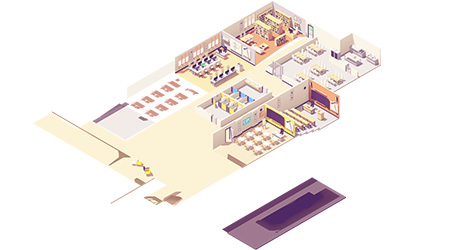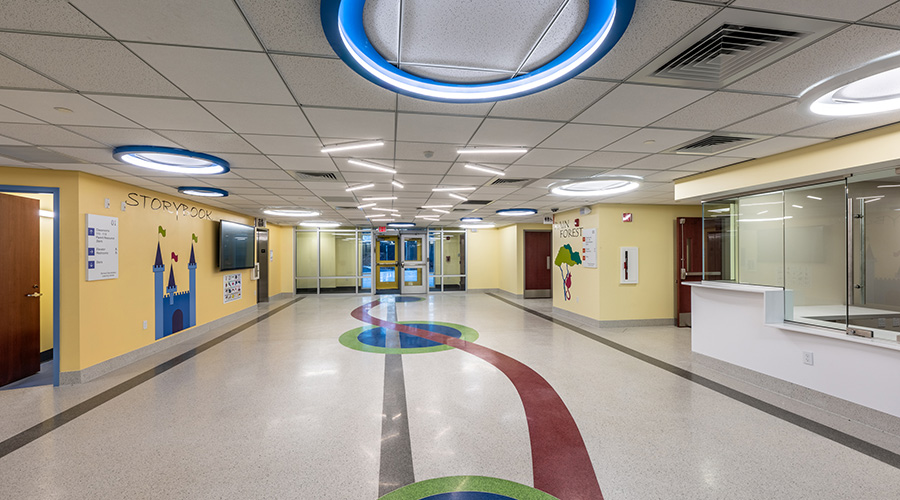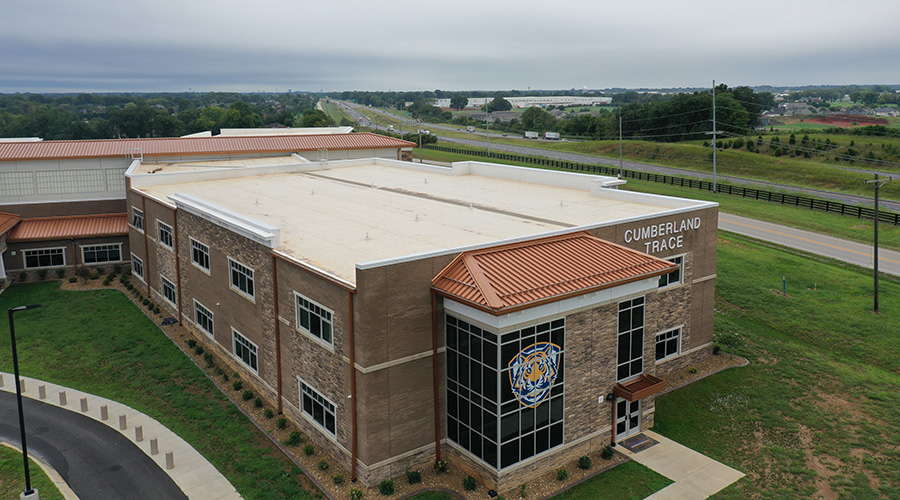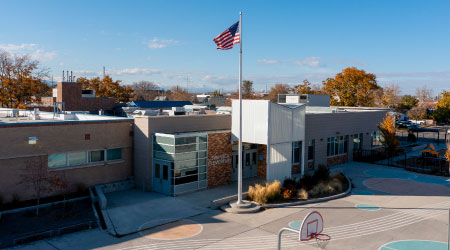How Flexible Design Can Improve Resilience in Uncertain Times
For educational facilities, adaptable learning environments empower students and staff even through disruptive times. One school in Illinois exemplifies this strategy.
Among the many lessons of the pandemic, school leaders have come to expect the unexpected — and in turn, to explore new ways to shape more resilient learning environments.
COVID-related worries and concerns plagued administrators through 2021 and will persist into 2022 as new variants emerge. From uneven guidance around masks and newly approved (for kids 5-11) vaccine use, to rising climate impacts like more severe storms and risk of wildfire, there’s a lot going on in today’s world that schools simply can’t predict.
All told, the rising potential for disruption makes a strong case for designing more flexible schools. The premise is simple: To create spaces that can easily be adapted to meet changing needs. Also relatively simple: The business case for change, given recent projects showing adaptable design may be more affordable than meets the eye.
Innovative design at Illinois school
During the pandemic, flexible design has helped some school administrators bring students back to campus faster than would have been possible in a traditional school environment. Ida Crown Jewish Academy in Skokie, Illinois, for example, was well-equipped to handle disruption.
Completed in 2016, the school’s unconventional, flexible design reflects its non-traditional approach to learning. The most unique feature of the campus is that it is divided into separate zones based on subject matter, so there are dedicated spaces for administrative, humanities, religious studies, math and science, arts, and athletics. The school further departs from the conventional high school layout by having teachers — not students — rotate through classrooms to teach each class (though they also enjoy a private office).
The design, of course, preceded COVID-19, because school leaders saw great potential in flexibility even then. They appreciated how this innovative construction plan would optimize the school’s square footage, increasing and decreasing individual classrooms based on how each was used at different times through the school day. Each classroom is a different size, which also supports flexibility, providing incredible options for functional scheduling that can adapt to the school’s needs as they arise.
School leaders also saw flexible design as an opportunity to enhance security. For example, in the event of an emergency lockdown, every zone can be closed off entirely from the others.
What they couldn’t have known then? This zone-based approach also supported safety during the height of the coronavirus pandemic, by making it simple for administrators to isolate cohorts of students and teachers to help reduce the risk of transmission.
Meanwhile, to facilitate healthy indoor air across these disparate zones, the Ida Crown Academy needed a unique ventilation solution for outside air intake. Utilizing a design-build approach that facilitated collaboration between the design team and electrical engineers, each zone was equipped with a massive filtration unit for outside air intake. The mechanical/electrical/plumbing and fire package was designed to get the most flexible value out of the system specifications. This functional approach helped reduce operational costs and maintenance issues in ordinary times.
And in extraordinary times like these, it also proved serendipitous by mitigating the potential spread of COVID. That’s because each zone filters and circulates its own air, limiting any potential for airborne transmission to an individual zone as opposed to spreading throughout the entire building.
Cooperative flexibility, unexpected value, and resiliency
Importantly, the Ida Crown campus’s deep flexibility helps students and staff adapt their own learning environments, on their terms. Every single space is easy to transform, from classrooms through to the school’s chapel, library and cafeteria areas. Think movable furniture and operable partition walls, which enable school leaders to reconfigure larger spaces for social distancing, or to adjust rooms when class sizes and functions shift.
Designing and building a school with this degree of flexibility takes careful consideration. Too often, construction teams proceed without a deep understanding of the school-specific environment. In this case, project leaders took time to get to know the school’s unique curriculum and approach to learning—and that attention made for better outcomes.
For example, solving for furniture storage was unusually important at Ida Crown, where different furniture is used at different times. Architects and designers also needed to recognize the unique role of acoustics and adjacency in different school locations. The chapel, for one, can be quiet today — even when a loud sporting event is happening outside at the same time.
The Ida Crown campus was designed before COVID-19 made its mark. But its planned flexibility helped the school endure some of the most uncertain moments of the pandemic. From reopening to in-person learning before most other schools could, to fueling its unique educational values, flexibility was exactly what Ida Crown needed.
Every school has unique needs for its campus. But in these rapidly changing times, flexible design may be a worthy common denominator in shaping future-friendly learning environments for the good of all students.
Nick Bassing is a vice president at Project Management Advisors, Inc., where he brings nearly 15 years of construction management and architectural design experience to manage education, civic, healthcare, research, and tech office interiors developments and renovations.
Related Topics:












